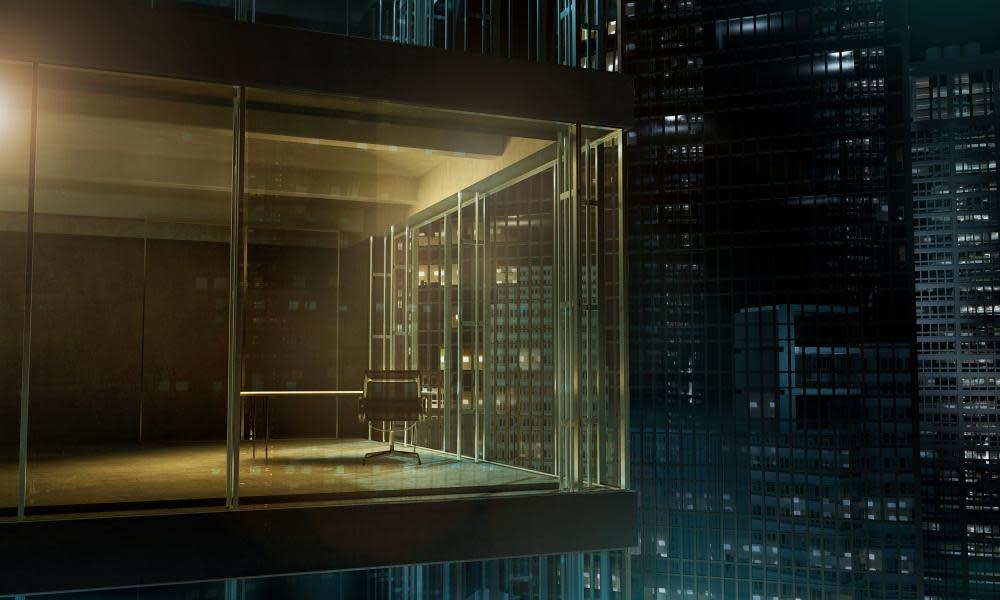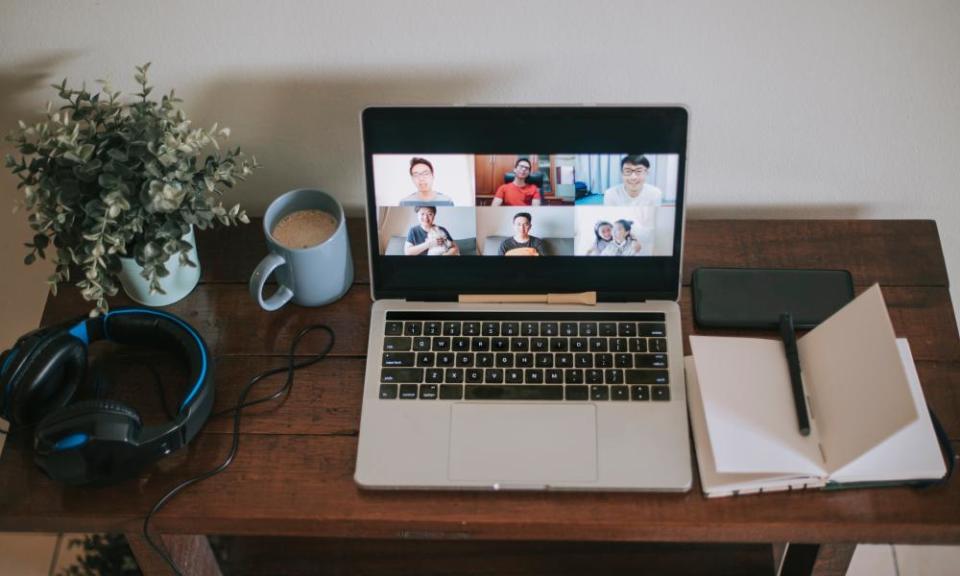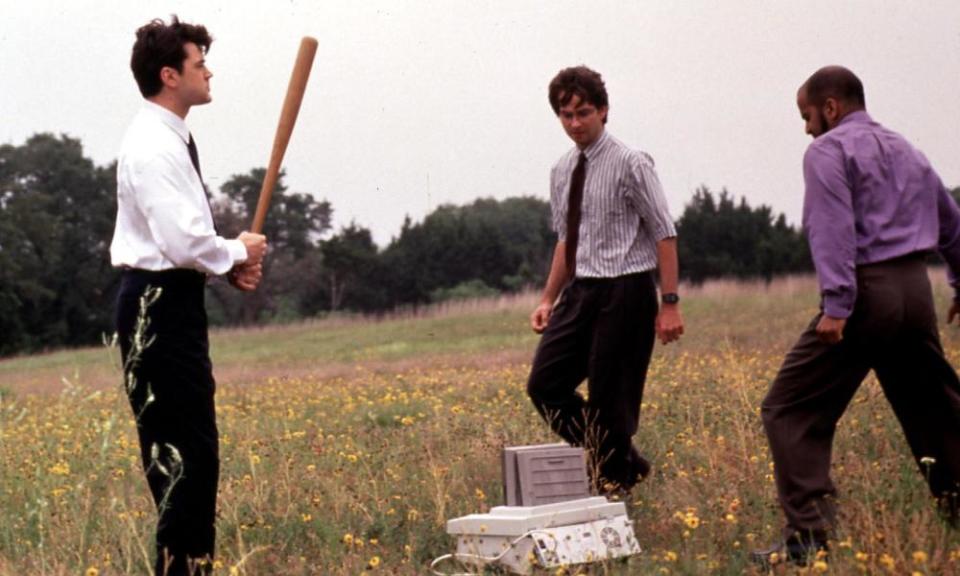Out of office: has the homeworking revolution finally arrived?

Ever since the arrival of broadband in the early 2000s, people have been predicting a revolution in homeworking. The revolution always felt oversold to me, too dismissive of our attachment to what cyberpunk writers and techno-utopians call “meatspace”. The number of homeworkers did rise, but they still had to endure tedious jokes about watching daytime TV and working in their pyjamas. Most people carried on going into work.
Then, in March, the future arrived with a bump, but in a very uneven way. Many workers still had to turn up for their essential and now hazardous jobs; others were furloughed or laid off. The rest of us had to tutor ourselves in video conferencing and data-sharing platforms. We got used to encountering our colleagues as rows and columns of heads and shoulders, like a very subdued game of Celebrity Squares with someone taking minutes. Meanwhile, ghostly reminders popped up on our email calendars, alerting us to work events arranged before lockdown. Somewhere in a parallel, pandemic-free universe, these events were being diligently attended by our alternative selves, people who had never heard of Zoom nor received an email telling them to “stay safe”.
Stuck at home, we adjusted to being, in Laurence Scott’s phrase, “four-dimensional humans”. We learned that this fourth dimension, online, bears only a deceptive resemblance to the three-dimensional world. They do things differently there. In this world of seemingly limitless connectivity, life feels both too sociable and too solitary. Online, we are constantly available to others but they remain tantalisingly unreachable to us.
And if this is the future, why does it keep buffering? Every online meeting I attend is blighted by Norman Collier-style microphone cutouts, audio delays and faces freezing in mid-flow. There is a lot of apologising for talking at once, as we fail to pick up on those little nods and intakes of breath we use in meatspace to signal that we wish to speak. We miss the inimitable way that others occupy the world: their gait, stride, gestures and bodily tics. Their voices, as unique in timbre as a fingerprint in the real world, all sound tinny through a computer speaker. Everything feels slightly askew, as if we have broken through a fourth wall and forgotten how to collude in that semi-improvised performance called work.

For all its unfairnesses, the physical workplace is egalitarian in one key sense: it forces people to share the same space, where it must provide them with the equipment to do their job. Working from home, by contrast, deepens our differences. Maybe you live on your own, in which case you are more on your own now than ever. Maybe you don’t, in which case you are surrounded more than ever by other people’s mess, noise and unscheduled demands. Maybe you work at the bottom of your garden in a bespoke shepherd’s hut painted in Farrow & Ball colours, with a fold-out bed and a wood-burning stove. Maybe you work at the kitchen table, peering into a tiny, antique laptop while trying to feed and homeschool your kids.
As Helen McCarthy argues in Double Lives, her new history of working motherhood, teleworking has been framed since the 1970s as a flexible way for women to juggle career and home life. More often, it has entrenched gender divides. Female homeworkers, she points out, are less well paid than their male counterparts, and less likely to have a dedicated home office or a partner on hand to help with childcare.
In 1970 Jonathan Gathorne-Hardy published a novel-cum-essay, The Office. Much of its setting – a netherworld of tea trolleys, long lunches and afternoon naps – now feels dated, as does the narrator’s description of the office as “a large squat nanny, waiting comfortably there to gently fuss me with all the details of her tiny, cosy world”. But the book does capture how much the office is a piece of collective meaning-making, a necessary fiction that we all invest in. We are joined together, Gathorne-Hardy writes, by these “minute rhythms like the slow breathing of the IN Tray, emptying and filling, filling and emptying”. The office’s tedium is bearable because it is “part of the human condition … a great brotherhood of boredom”.
The threat of contagion has always competed with the fear of isolation. A hug from a colleague might be lethal, or it might be a lifesaver
Sociologists have long stressed the importance of weak social ties. Ad hoc, undemanding forms of community make life liveable just as much as friendship and intimacy. Office gossip, often dismissed as trivial and timewasting, is the glue that makes everything else cohere. In his 1996 book Grooming, Gossip and the Evolution of Language, the anthropologist Robin Dunbar was already worrying that online working was putting at risk “chance encounters over the coffee machine, idle chatter around the photocopier”. Casual interaction, he argued, worked “like a parallel-processing supercomputer”, generating ideas that people could never have on their own. Dunbar’s more recent research has found that there is no substitute for face-to-face communication when it comes to maintaining relationships. We are tied to our evolutionary past as members of small tribes, reliant on body language and eye contact to bond with each other.
A painful lesson of the pandemic is that this need to be near other people makes us a very convenient means of transport for viruses. The most germ-covered objects in the workplace are the most communal: the start button of the photocopier, the handle of the fridge door in the staff kitchen, the shared coffee pot. Throughout human history, the threat of contagion has competed with the fear of isolation. A hug from a colleague might be lethal or it might be a lifesaver. Other people are our ruin and our salvation.
Homeworking should suit me well enough. I am a classic introvert, someone who needs to make strategic retreats from the social world to gather my thoughts, otherwise my brain freezes like a computer that has run out of memory. I prefer email to the phone because it lets me reshape my sentences and decide when (and whether) to press send. As a writer and lecturer, I work with words, and words can always be made earlier, and made anywhere. Human beings may be tribal but luckily they have also evolved ways of communicating that do not require their physical presence. Words stand in for our embodied selves. They are the safest form of social distancing invented.
In his book The Poetics of Space, the French philosopher Gaston Bachelard writes of the “hut dream” – the common desire to retreat somewhere periodically for periods of solitary reflection, gestation and creativity. Writers often seek out such seclusion and confinement. George Orwell escaped to an abandoned farmhouse at the end of a dirt track on Jura, Tove Jansson to a small cabin on a skerry in the Gulf of Finland, Dylan Thomas to his “word-splashed hut” overlooking the Taf estuary. They were teleworkers avant la lettre.
But the hut dream is just that: a dream. Great deeds either get done or they don’t; it doesn’t much matter where. I have often longed to escape from distractions and interruptions, only to discover that they too are part of life – and unless you live your life there is nothing to write about. And now I find I miss the sound of other people while I work, even just the clank of a cleaner’s bucket in the corridor, or a chair scraping the floor in the room above. It’s not the actual contact I crave so much as the feeling that other people are nearby, that even when I am just tapping away at a keyboard my work forms part of a delicate ecosystem in which I belong to the whole.
Much can be done online: tick the boxes, click send. But what is lost is the elusive, enveloping substance of work that gives it a human texture
I teach in a university. The Canadian sociologist Erving Goffman, prolific researcher but less assiduous teacher, once said that “a university is a place to pick up your mail”. Goffman wouldn’t even have been able to do that over the last few months – months that have only confirmed how wrong he was. Students might these days be able to put an entire library on their phones. But learning is a lonely and insipid experience without a physical space to share ideas and hear an echo, somewhere to spark off serendipitous encounters and feel part of the galvanising rhythms of classrooms emptying and filling.
The abstract, managerialist language of modern life underplays the concrete and collegiate aspects of work. It focuses instead on the completion of generic processes and procedures. The aim is to keep the flow of data going – that virtual paper trail of meetings minuted, action points followed up, forms filled in, key performance indicators measured and met. Much of this can be done easily online: tick the boxes, insert your e-signature, click send. But what is lost is the elusive, enveloping substance of work that gives it a human texture and taste. Without it, work feels “satisficing” but unsatisfying, like playing a football game in an empty stadium just to get the season done.
TS Eliot wrote that a poem’s meaning was just the hunk of meat that the burglar throws to the guard dog to keep it occupied while the poem works its real magic on the reader. Perhaps something similar could be said of work. Its ostensible purpose, the material product of its labours, is just the meat for us to chew on. What really counts is how it fills our days with collective resolve and with the rich, irreducible, life-enhancing details of human relationships.
By any rational, efficiency-saving measure, we should work from home more than we do. Many analogue tasks have a timesaving digital equivalent. Commuting is unpaid labour, and ecologically, as the American poet Gary Snyder said in the 1970s, “the most radical thing you can do is stay home”. Post lockdown, some work habits do seem hopelessly outmoded. Why should hundreds of people make hundreds of separate journeys to converge on a single conference centre, just to squint myopically at each other’s name badges when they could be squinting myopically at each other on screen?
But you might as well ask why monks get up before dawn to sing the Night Office. A lot of work relies on the suspension of disbelief, a shared pretence that it matters more than it does. Since we are mimetic creatures, who learn by copying and looking to others for validation, this pretence is easier to keep up when we are in the same room. “Rigid, the skeleton of habit alone upholds the human frame,” as Virginia Woolf writes in Mrs Dalloway. Work can’t be reduced to its instrumental function or its end result. Its meaning lies in the doing of it.

Fictional accounts of office life tend to focus on its life-sapping monotony. “Human beings were not meant to sit in little cubicles, staring at computer screens all day, filling out useless forms and listening to eight different bosses drone on about mission statements,” as the main character says in Mike Judge’s 1999 film Office Space. In Joshua Ferris’s 2007 novel Then We Came to the End, the creatives in a Chicago ad agency fill their days by counting the ceiling tiles, organising swivel-chair races and paper-toss competitions, and wandering the hallways “carrying papers that indicated some mission of business”. But they keep turning up for work because even the dreariest task “presented challenges to overcome, the distraction provided by a sense of urgency” and because they have to believe in their hearts that “each one of us was memorable”. Ferris conveys the office’s fragile notion of community with a simple but tricky-to-pull-off device: the whole book is narrated using the first-person plural “we”. A working-from-home novel would struggle to recreate that feeling of mutual entanglement.
Clive James once said that the most tragic line in Shakespeare is “Othello’s occupation’s gone”. Work props up our lives, fills them with reassuring structure and staves off existential dread. At work we may not be loved, but we are named and known. Other people rely on us to turn up, say our lines on cue and not bump into the furniture. We lockdown homeworkers have been given a small inkling of the weightlessness of the zero-hours, gig-economy life, where this sense of rootedness is missing.
I try to picture all those empty offices across the country, abandoned since March. All those pot plants dying slowly of thirst, mugs growing green mould in the coffee dregs, forgotten milk curdling in fridges, screensavers saving screens for weeks on end. I find it all hard to imagine, because an office barely seems to exist without people in it. Swivel chairs are meant to be sat in, workstations worked at, pigeonholes checked and emptied of mail.
In Kindred Spirits, his memoir of life as a publisher, Jeremy Lewis writes: “The horrors of office life are soon forgotten once one has left the scene, in much the same way as summer holidays spent gazing angrily out while the rain drums against the windowpane and the clouds scud across a Cornish harbour are eclipsed, in retrospect at least, by occasional flashes of watery sun.” Some of us now have an idea of what he meant. Nostalgia settles in the unlikeliest places. Exiled from our desks, we are surprised to discover how much we miss them.


